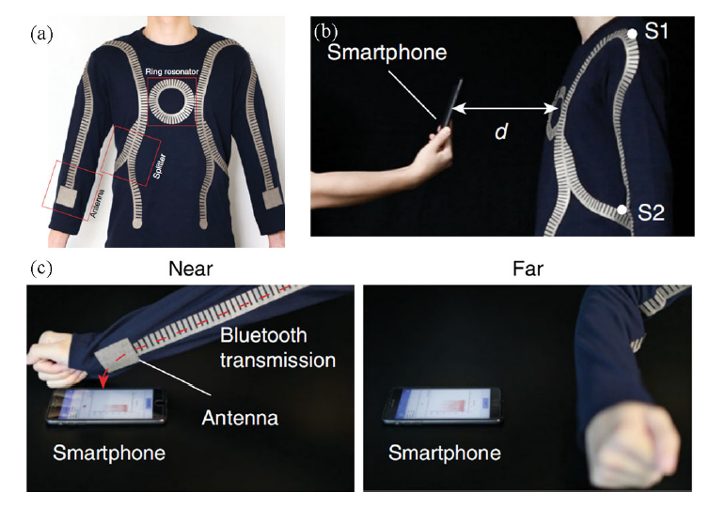Spoof surface plasmons
When the surface of a perfect conductor is structured at a length scale much smaller than the operating wavelength, geometrically induced surface electromagnetic modes can be supported. Owing to their similarities with the surface plasmon polaritons in the optical regime, these surface electromagnetic modes were named spoof surface plasmons. A new review 1 provides a detailed perspective on the recent developments in spoof surface plasmon photonics from both the fundamental and applied sides.

An exciton can be described as an electron-hole pair in a crystal that is bound in a manner analogous to the electron and proton in a hydrogen atom. The exciton behaves like an atomic excitation that passes from one atom to another. In most cases, excitons are induced by an electromagnetic wave, a photon. Interestingly, in some cases the frequencies of vibration of an incoming electromagnetic wave and the resulting exciton are very similar, and they resonate. When they have a strong resonance interaction with each other, a quasi-particle results from the admixture of states of the photon and the exciton, the polariton.
Thus, polaritons are quasiparticles resulting from the strong coupling of photons with a dipole-carrying excitation. A class of polaritons are surface plasmon polaritons (SPPs), which are the result from coupling of surface plasmons – collective electronic oscillations at the surface of metals – with light (the wavelength depending on the substance and its geometry).
SPPs have been widely studied for their possible use in modifying light-matter interactions in general and, in particular, for their associated field enhancement, their capability to concentrate light, and their sensitivity to the dielectric environment, which allows the sensing of minute quantities of materials.
The physical origin of SPPs resides in the conduction electrons that govern the optical response of metals. These quasifree electrons present a natural plasma frequency that sets the speed at which they can oscillate resonantly. Plasma frequencies of metals are spectrally located in the petahertz range, in the ultraviolet part of the electromagnetic (EM) spectrum. This makes metals behave as perfect conductors for low-frequency radiation. In the gigahertz and terahertz regimes, conduction electrons respond fast enough to efficiently screen out any external EM stimuli, expelling them completely from the volume of the metal.
However, at higher frequencies approaching the optical and visible regimes (∼500 THz), conduction electrons can no longer shield EM fields as efficiently. As a result, EM fields penetrate into the metal bulk, with an exponential decay dictated by the so-called skin depth. Since the ratio between skin depth and wavelength decreases rapidly as the frequency decreases, SPPs in the terahertz regime are already so delocalized in the dielectric region that they are useless for most applications. The skin depth and, correspondingly, the confinement of SPPs in the dielectric side, can be enlarged by reducing the screening of EM fields by the metal, i.e., by reducing its electron density. This is not possible in bulk metals, but it can be achieved by using doped semiconductors as metallic systems.
Another possibility is using metals with patterned apertures on their surfaces. The idea is that the EM field penetration inside the apertures will, on average, correspond to that of a metal with a larger skin depth. In anthropomorphic terms, even for a perfect conductor, the penetration inside the apertures fools the EM field into believing that it is encountering a metal with a finite skin depth, i.e., a finite permittivity. This is a spoof, a deception and, correspondingly, the associated bound EM modes were termed spoof surface plasmons, or spoof SPs.
The fact that spoof SPs can be created simply by geometrical means has allowed their emergence in a broad range of frequencies, ranging from the microwave to the midinfrared regimes, those in which a metal behaves as a quasiperfect conductor. This broadband capability, which differentiates them from standard SPPs and gives them many potentialities.
In recent years, several research groups have extended this concept from planar surfaces to waveguides, and eventually to resonators, covering the entire range of structures studied in standard plasmonics.
Author: César Tomé López is a science writer and the editor of Mapping Ignorance
Disclaimer: Parts of this article may be copied verbatim or almost verbatim from the referenced research papers.
References
- Francisco J. Garcia-Vidal, Antonio I. Fernández-Domínguez, Luis Martin-Moreno, Hao Chi Zhang, Wenxuan Tang, Ruwen Peng, and Tie Jun Cui (2022) Spoof surface plasmon photonics Rev. Mod. Phys. doi: 10.1103/RevModPhys.94.025004 ↩